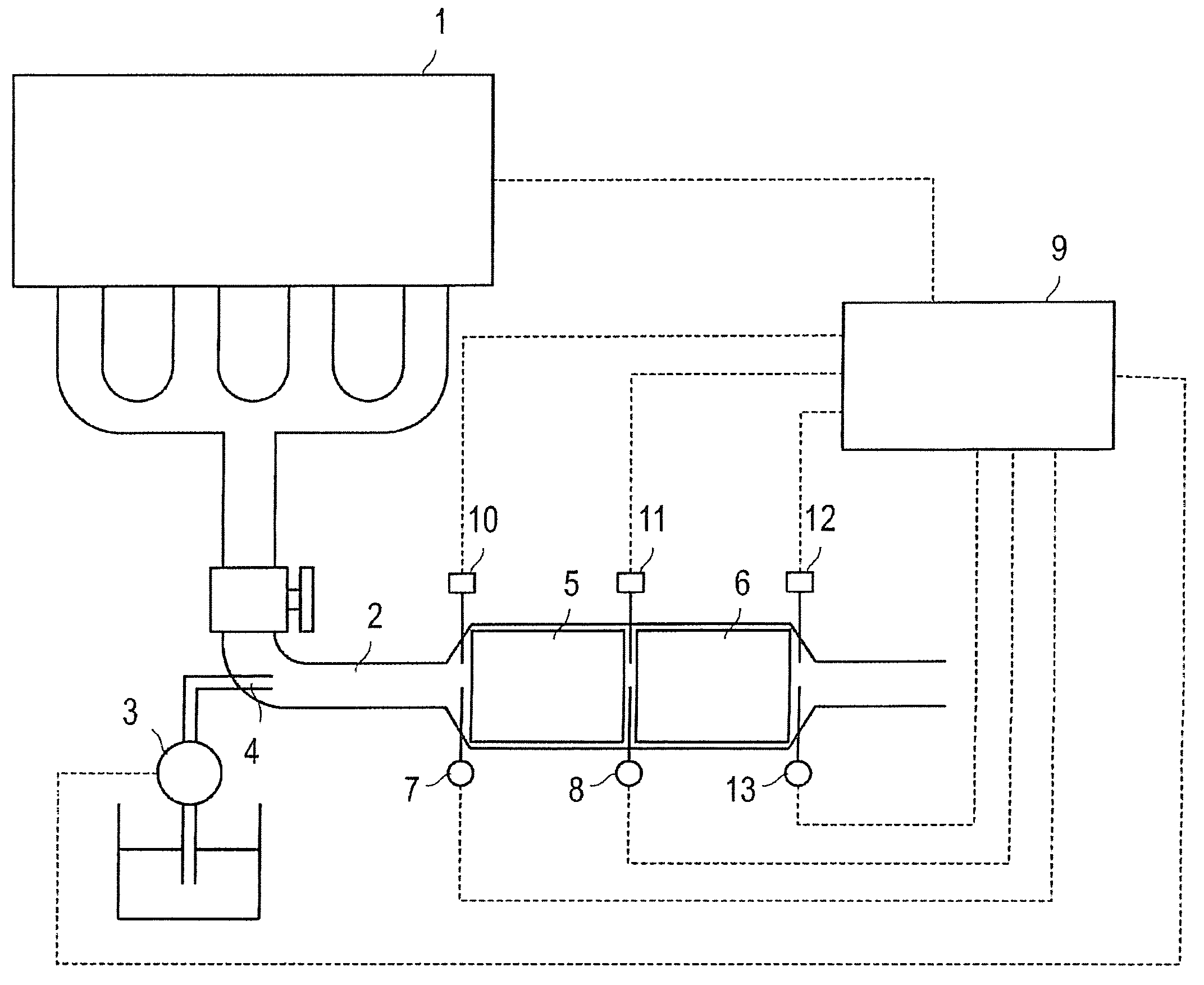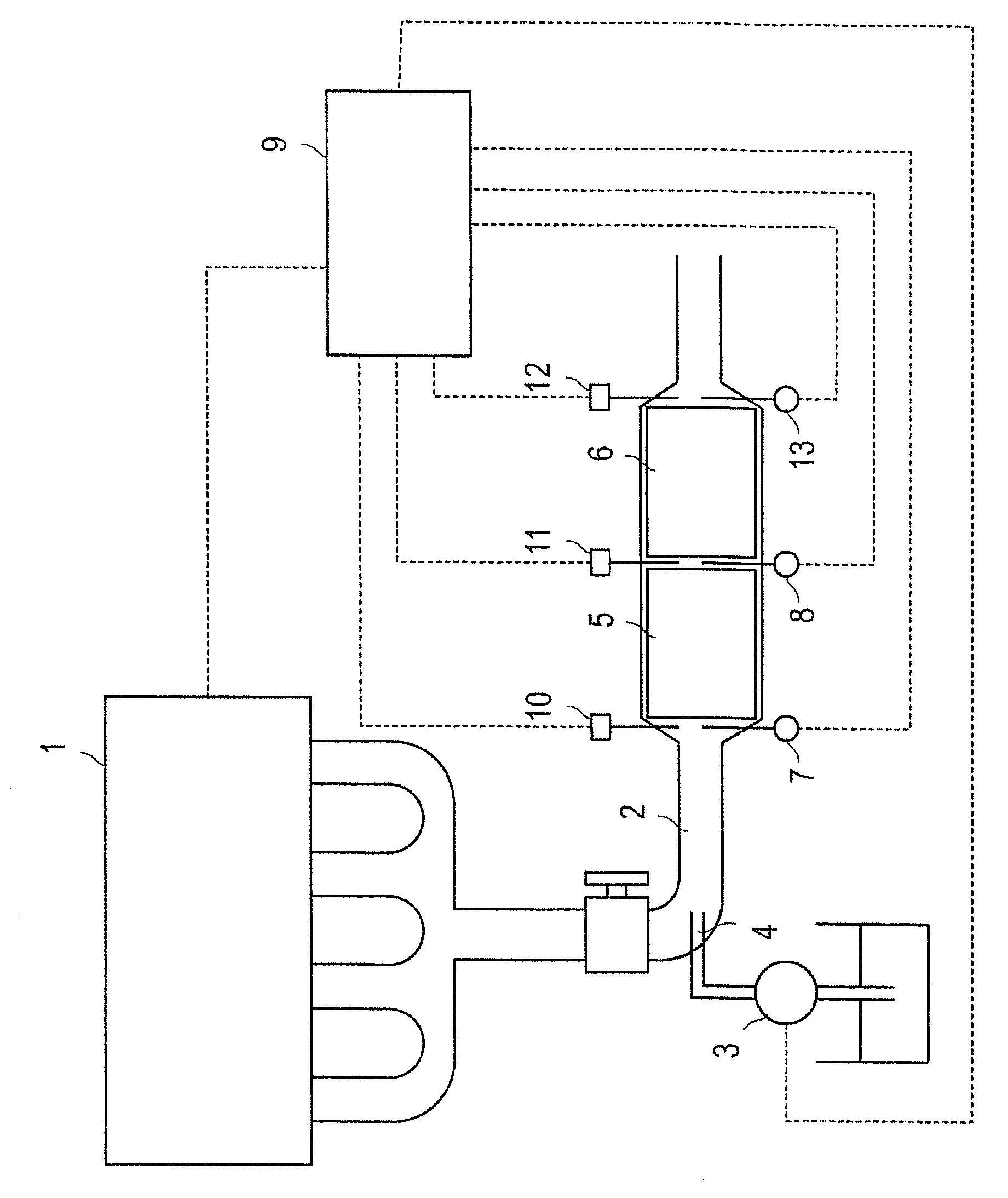Method for purification of exhaust gas from internal combustion engine
a technology for internal combustion engines and exhaust gas, which is applied in the direction of physical/chemical process catalysts, separation processes, metal/metal-oxide/metal-hydroxide catalysts, etc. it can solve the problems of adverse effect on running performance or environment, and achieve the reduction of production costs, reducing the limitation of installment places, and reducing the effect of hydrocarbon poisoning
- Summary
- Abstract
- Description
- Claims
- Application Information
AI Technical Summary
Benefits of technology
Problems solved by technology
Method used
Image
Examples
example 1
[0066]Water was added to a dinitroamine platinum aqueous solution in an amount equivalent to 2 g of platinum, a magnesium acetate tetrahydrate in an amount equivalent to 0.6 g of magnesium, a palladium nitrate aqueous solution in an amount equivalent to 0.5 g of palladium, and 120 g of alumina (γ-Al2O3, with a BET specific surface area of 200 m2 / g, and an average primary particle diameter of 6 μm), to be subjected to wet grinding in a ball mill. Similar operation was repeated several times to prepare 1500 g in total of aqueous slurry. This slurry was wash-coated onto 1 L of monolith honeycomb carrier made of cordierite, having 400 cells per 1 square inch of cross-sectional area, and subjected to drying at 120° C. for 8 hours, and then calcining at 500° C. for 1 hour to obtain a catalyst A. Supported amount of each component of the resulting catalyst A, per 1-L of monolith carrier, was 2 g of platinum, 0.5 g of palladium and 0.6 g of magnesium.
example 2
[0067]A catalyst B was obtained by a similar method as in Example 1, except that instead of magnesium acetate tetrahydrate in an amount equivalent to 0.6 g of magnesium, magnesium acetate tetrahydrate in an amount equivalent to 1.2 g of magnesium was used.
example 3
[0068]A catalyst C was obtained by a similar method as in Example 1, except that instead of magnesium acetate tetrahydrate in an amount equivalent to 0.6 g of magnesium, magnesium acetate tetrahydrate in an amount equivalent to 6 g of magnesium was used.
PUM
| Property | Measurement | Unit |
|---|---|---|
| temperature | aaaaa | aaaaa |
| temperature | aaaaa | aaaaa |
| temperature | aaaaa | aaaaa |
Abstract
Description
Claims
Application Information
 Login to View More
Login to View More - R&D
- Intellectual Property
- Life Sciences
- Materials
- Tech Scout
- Unparalleled Data Quality
- Higher Quality Content
- 60% Fewer Hallucinations
Browse by: Latest US Patents, China's latest patents, Technical Efficacy Thesaurus, Application Domain, Technology Topic, Popular Technical Reports.
© 2025 PatSnap. All rights reserved.Legal|Privacy policy|Modern Slavery Act Transparency Statement|Sitemap|About US| Contact US: help@patsnap.com


